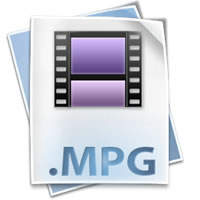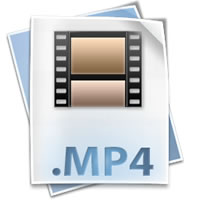Difference between MPG and MP4
Key difference: MPEG stands for the Moving Picture Experts Group. One of the most commonly used MPEG formats is the .mpg or .mpeg. .mpg is one of a number of file extensions for MPEG-1 or MPEG-2 audio and video compression. The two formats are most commonly used for compressed video content with sound. They are commonly accepted on various platforms. MP4, on the other hand, is based on Apple’s MOV file type. MPEG-4 Part 12 was developed from the Apple’s MOV file and eventually resulted in MPEG-4 Part 14, which is the MP4 format.
 MPEG stands for the Moving Picture Experts Group. It is a working group of experts that was formed in 1988 by ISO and IEC. It was a joint initiative between Hiroshi Yasuda of the Nippon Telegraph and Telephone and Leonardo Chiariglione. Chiariglione has served as the group’s Chair since the group’s inception.
MPEG stands for the Moving Picture Experts Group. It is a working group of experts that was formed in 1988 by ISO and IEC. It was a joint initiative between Hiroshi Yasuda of the Nippon Telegraph and Telephone and Leonardo Chiariglione. Chiariglione has served as the group’s Chair since the group’s inception.
The aim of MPEG was to set standards for audio and video compression and transmission. By 2005, the group has grown to include approximately 350 members per meeting from various industries, universities, and research institutions.
The standards as set by MPEG consist of different Parts. Each part covers a certain aspect of the whole specification. MPEG has standardized the following compression formats and ancillary standards:
- MPEG-1 (1993): Coding of moving pictures and associated audio for digital storage media at up to about 1.5 Mbit/s (ISO/IEC 11172). Designed to compress VHS-quality raw digital video and CD audio without excessive quality loss, making video CDs, digital cable/satellite TV and digital audio broadcasting (DAB) possible. It includes the popular MPEG1 Audio Layer III (MP3) audio compression format.
- MPEG-2 (1995): Generic coding of moving pictures and associated audio information (ISO/IEC 13818). Describes a combination of lossy video compression and lossy audio data compression methods, which permit storage and transmission of movies using currently available storage media and transmission bandwidth.
- MPEG-3: Dealt with standardizing scalable and multi-resolution compression and was intended for HDTV compression but was found to be redundant and was merged with MPEG2.
- MPEG-4 (1999): Coding of audio-visual objects. Includes compression of AV data for web (streaming media) and CD distribution, voice (telephone, videophone) and broadcast television applications. It includes the MPEG-4 Part 14 (MP4).
- MPEG-7 (2002): Multimedia content description interface. Not a standard which deals with the actual encoding of moving pictures and audio, like MPEG1, MPEG2 and MPEG4. It uses XML to store metadata, and can be attached to timecode in order to tag particular events, or synchronize lyrics to a song.
- MPEG-21 (2001): Multimedia framework. It is aimed at defining an open framework for multimedia applications. Based on definition of a Digital Item and users interacting with Digital Items.
One of the most commonly used MPEG formats is the .mpg or .mpeg. .mpg is one of a number of file extensions for MPEG-1 or MPEG-2 audio and video compression. The two formats are most commonly used for compressed video content with sound. They are commonly accepted on various platforms.
The MPEG-1 and MPEG-2 is a standard for lossy compression of video and audio. A lossy compression means that while saving a file, there is a slight loss of quality due to compression. With each re-save there a slight loss of quality due to compression. Hence, it is not the greatest format in case one needs to keep making numerous edits and re-saves to the image. Still, if one only makes a few edits and the file is saved in a high quality format, the slight loss of quality due to compression is mainly negligible. An advantage to using this format is that due to compression, the file will take up less space for data storage.
The MPEG-1 standard consists of the following parts:
- Systems (storage and synchronization of video, audio, and other data together)
- Video (compressed video content)
- Audio (compressed audio content)
- Conformance testing (testing the correctness of implementations of the standard)
- Reference software (example software showing how to encode and decode according to the standard)
 MP4, on the other hand, is based on Apple’s MOV file type. MPEG-4 Part 12 was developed from the Apple’s MOV file and eventually resulted in MPEG-4 Part 14, which is the MP4 format. The MP4 is a container format. This means that it can be used to store audio and/or video data. MP4 video and audio can also be streamed over the internet.
MP4, on the other hand, is based on Apple’s MOV file type. MPEG-4 Part 12 was developed from the Apple’s MOV file and eventually resulted in MPEG-4 Part 14, which is the MP4 format. The MP4 is a container format. This means that it can be used to store audio and/or video data. MP4 video and audio can also be streamed over the internet.
As MP4 is a container format, it does not have a standard method of coding the audio or video information. Instead it uses codecs that dictate how the audio or video will be coded. Advanced Audio Coding (AAC) is the most popular codec for compressing audio in MP4 format.
MP3 is an audio compression format that is used to compress and store audio on a computer. It is part of the MPEG-1 standard, specifically MPEG-1 Audio Layer 3. Comparatively, MP4 is a container format used to store audio and video files. It can even store subtitles for a video file. As a container, MP4 can save audio and video files that have been compressed in different fashions, including as MP3.
However, due to this MP3 players cannot usually play MP4 files and vice versa. Still, there are now a number of portable players and software options available that can play both, for example, VLC player, Winamp, etc. This is mainly due to the fact that the MP4 format has been steadily increasing in popularity.
Image Courtesy: softicons.com, iconfinder.com









Comments
Kara
Sat, 11/14/2015 - 15:26
Kara
Sat, 11/14/2015 - 15:26
Add new comment